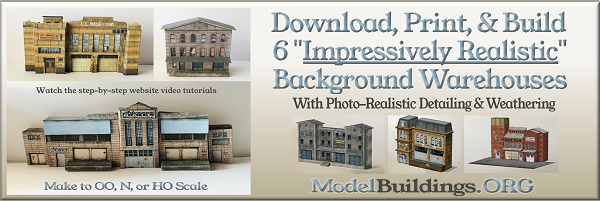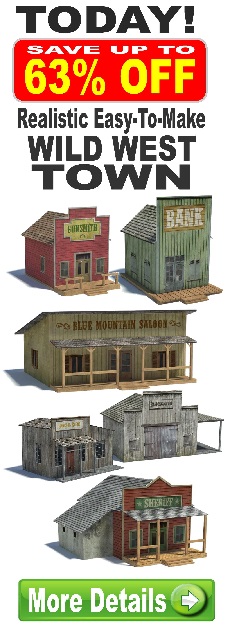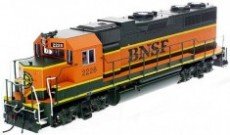Everything on model trains, model railroads, model railways, locomotives, model train layouts, scenery, wiring, DCC and more. Enjoy the world's best hobby... model railroading!
TMCC Trainmaster Command Control
Ian asks readers:
“I don’t know about T.M.C.C. and would appreciate any pointers to help fill in my knowledge gap. I have heard others talking about Radio Control similar to model aircraft and wonder if it a real possibility to set up this method as I am about to retire D.C. for my H O setup and am at the decision time. Comments from the Blog will be of great assistance.”
Confusion With DCC
Drew needs advice from readers and asks:
“I have a rather large HO layout – arranged in a L shape – 20 ft x 8 ft – which I am converting to DCC. Since DCC is supposedly AC power (or so I have been told), why are boosters needed since AC keeps a constant current regardless of the distance to the power supply (well, within reason…)? I have also purchased two (2) boosters for my layout. Since I now have three power supplies does it matter where I place the boosters on the “L”? Thanks VERY much for the answers!”
Add your comment or suggestion below this posting if you can help Drew.
Finding Logging Locos (Shays)
Bryan asks readers:
“I finally have the time to enter the hobby, and really want to do something in the logging industry. I’ve been dreaming for years, but not watching prices! Where in the world does one find HO Shay’s these days for less than $1200?!!
I’d really like to join in on the hobby, but seriously, how in the world can you get started at those prices? Also, it seems that availability (why prices are so high?) is really limited. Any direction/advice is really appreciated.”
Digital Command System vs TrainMaster Command Control
Steve asks readers:
“Hi, I really (think I) want to move from Conventional to DCS (Digital Command System) / TMCC (TrainMaster Command Control). The current O scale layout is 8 x 16, and use Conventional Postwar, Modern, and TMCC Lionel, along with Modern P1, P2, and P3 MTH Locomotives.
- The current Layout
- 8 track blocks using 2 ZW transformers.
- Three (3) Mainlines connected by 2 common sections, with 3 spurs off the main lines.
- Switches are isolated power (non-track) connected to a Lionel 1033,
- Accessories are toggle switched to an LW.
- The 3 main tracks run off 3 bus lines with dropdowns about every 6 feet.
- The two common sections are wired directly to two(2) ZW terminals.
- The layout is basically two separate large loops – an upper and a lower level- with an inner figure 8.
- At the south end the figure 8 and the lower outside loop use a common track section about 6 feet long. At the north end the upper and lower outside loops share a common track for about 2 feet.
So my transformers power an “A” loop, “B” loop, “C” loop as Mains, an “A-B” common, and an “A-C” common, then the 3 isolated spurs on the remaining 3 terminals. Each uses a separate ZW terminal. The remainders are on the ZWs are for isolated sidings,Everything is color coded so I pretty well know what wires goes to what.
So my questions are:
1) TMCC vs DCS
2) What’s involved in moving to DCS / TMMC
3) Can I run post war, and my moderns
One problem I do currently have is that unless my isolated blocks are all at the exact voltage the post war Locos trip into neutral when changing blocks.
Can you help me please?”
Layout Sideboards O Scale
Daniel asks readers:
“I am using 1″ foam on top of plywood tables. I would want to apply side boards to all sides to protect foam edges. Should it be higher than foam for other materials over foam, i.e.; ballast , grass, soil, etc? Thanks for any comments.”
9 x 10 Spare Room Layout
Rickey asks readers:
“Hello everyone , I’m just now getting back into model railroading. I have a 9 x 10 spare bedroom that I plan using for my lay out. I want to build a logging layout and am looking for track ideas. My thought in is HO wider than on3 or will a shay or climax run on HO track.
Converting to DCC
Club member Arnold has been railroading for over 35 years and sent in this article to share:
Contrary to what some people think, wiring for DCC wiring can actually be easier than the older style DC wiring.
Let’s look at some DC scenarios. An older DC layout might have a very basic loop with 2 wires attached at one location, whereas a more complex DC layout might need insulated rails and more power wires leading off to extra sidings (and sections) where you would probably need to turn off one train on one track to run another. If you wanted a couple of trains to operate on the same track you would more than likely separate the run into multiple sections. In that way you could turn off one train to prevent it from getting in close proximity to the train a head of it. Naturally each train would need to be within it’s own section to achieve this. So, unless you have a setup with a double pole switch to an individual section – the trains would all run in the same direction. So, as you can see there are limitations with DC operations.
Compare that to DCC where it’s easy to run bus wires under the baseboard, and then link to the rails using feeder wires. By doing that the power is on and can be left on all the time covering the entire layout. In effect, instead of having multiple wiring feeding out from your switchboard, you only need two main feeder wires.
So despite what you might have heard; wiring for DCC is simpler than for DC. I personally think it is well worthwhile converting over, and it opens up new operational possibilities. However if you are still operating DC, then just switch everything on (in the proper direction), and instead of the old transformer, link up DCC and you’ll have a DCC layout. That said; if your track has long runs you’ll need wire leads following the track beneath and link up extra wire drops along the way (with strong enough wire).
The Digital Revolution In Model Railroading
Model railroading has come a long way from clockwork wind-up toys to sophisticated digital technology. It’s now possible, and relatively inexpensive, to have model trains, accessories, and scenic features perform all kinds of interesting and useful functions.
What Tools To Use When Laying Track
Some time ago Hank sent in his list of suggested tools for laying track:
1. A hobby knife for removing ties [sleepers]
2. Side cutters [if you need to remove any track pins]
3. Snipe nose pliers [for holding the track pins]
4. A small pin hammer
5. A mini-drill with a cutting disk, or a hacksaw [for cutting the track]
6. A pin vice with a very small drill bit [for drilling holes for track pins in the ties]
7. A soldering iron
Tips From Bernie
Bernie sent in these tips to share:
“What I have done for making ballast is this: Dry used coffee grounds. Once dried, mix a small amount of white to white-grey paint in a container. Then stir in the coffee grounds until the paint is absorbed. Place the painted grounds on a tray to dry and viola….. ballast. Also, lavender and rosemary branches make a great base for trees.”
Fixing Problem Track Connections
Jordan asks readers:
“Most of my HO track seems okay except for 3 curved pieces that won’t join perfectly without a slight gap. I am worried about a derailment when cars cross the connections. How can I improve the connections please?”
Controlling More Functions on your Railroad
Thanks to electronic technology it is not only possible to control more functions on your layout, but it’s possible to add lots of exciting new features without using up precious layout space, or it costing you an arm an a leg. Digital technology is not only very clever, and very small, it is also surprisingly inexpensive for what it does. A small micro controller can easily be programmed to perform a number of tasks. This video explains more.
Determining The Correct Car Weight
Club member Troy asks readers:
“I have just worked why I have been having a few problems with train stability on my HO track. I think the weight of some of my HO flat cars is too light and needs increasing, but I don’t know by how much. Is there an easy way to tell if a car is too light? What’s the best way to add weight, where, and how much? Thanks to everyone.”















